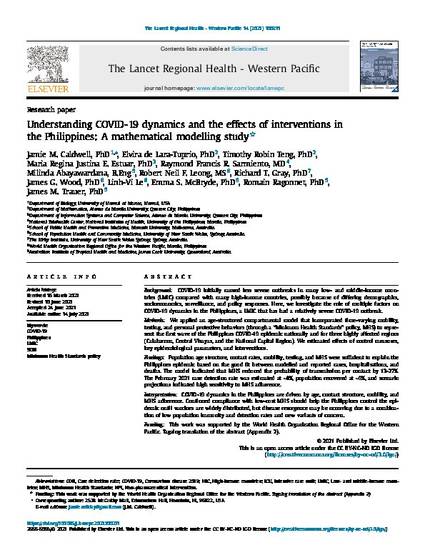
Background
COVID-19 initially caused less severe outbreaks in many low- and middle-income countries (LMIC) compared with many high-income countries; possibly because of differing demographics; socioeconomics; surveillance; and policy responses. Here; we investigate the role of multiple factors on COVID-19 dynamics in the Philippines; a LMIC that has had a relatively severe COVID-19 outbreak.
Methods
We applied an age-structured compartmental model that incorporated time-varying mobility; testing; and personal protective behaviors (through a “Minimum Health Standards” policy; MHS) to represent the first wave of the Philippines COVID-19 epidemic nationally and for three highly affected regions (Calabarzon; Central Visayas; and the National Capital Region). We estimated effects of control measures; key epidemiological parameters; and interventions.
Findings
Population age structure; contact rates; mobility; testing; and MHS were sufficient to explain the Philippines epidemic based on the good fit between modelled and reported cases; hospitalisations; and deaths. The model indicated that MHS reduced the probability of transmission per contact by 13-27%. The February 2021 case detection rate was estimated at ~8%; population recovered at ~9%; and scenario projections indicated high sensitivity to MHS adherence.
Interpretation
COVID-19 dynamics in the Philippines are driven by age; contact structure; mobility; and MHS adherence. Continued compliance with low-cost MHS should help the Philippines control the epidemic until vaccines are widely distributed; but disease resurgence may be occurring due to a combination of low population immunity and detection rates and new variants of concern.
